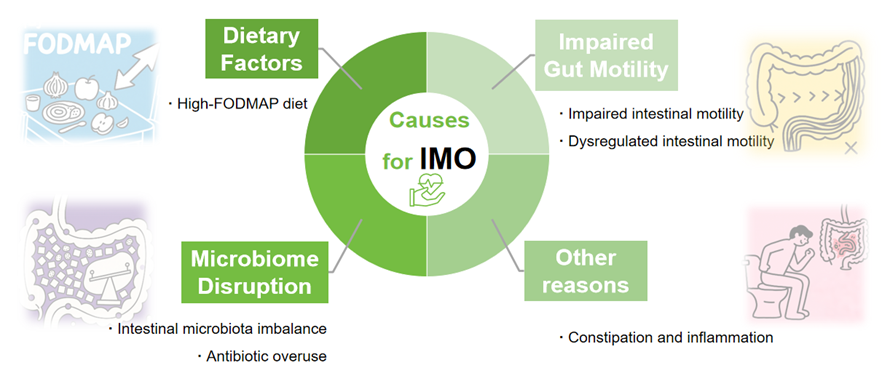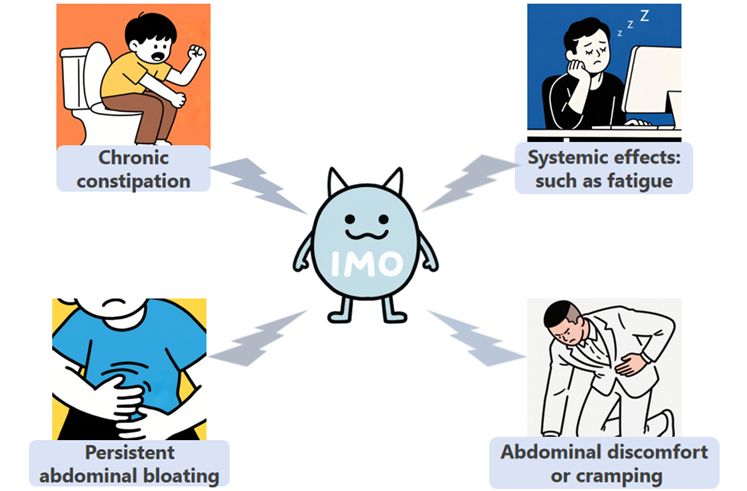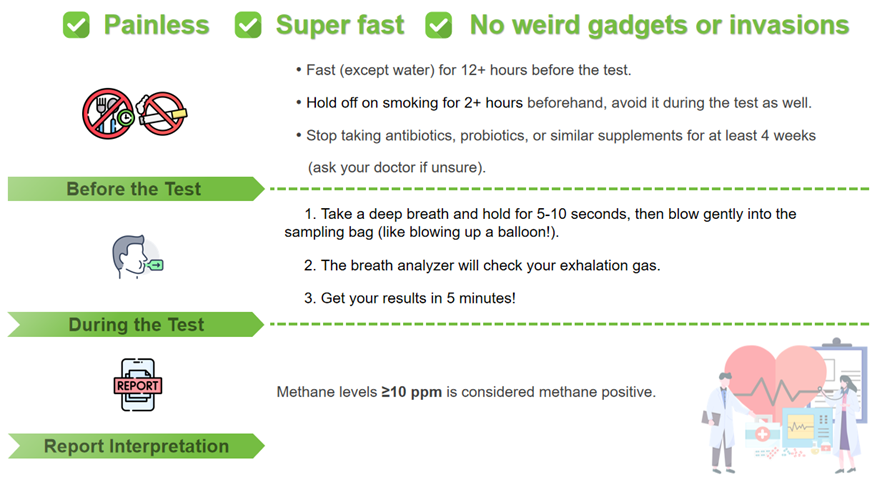What Are Intestinal Methanogens?
Intestinal methanogens are microorganisms belonging to the archaea domain, distinct from common gut bacteria. They assist in breaking down undigested carbohydrates, producing methane gas as a byproduct. While normally present in small quantities, their overgrowth can lead to the Intestinal Methanogen Overgrowth (IMO).
Causes for Intestinal Methanogen Overgrowth

Recognizing IMO-Related Symptoms

Diagnostic Approach
The Hydrogen and Methane Breath Test is a simple, non-invasive tool used to diagnose IMO. During the test, you'll breathe into a specialized device after fasting or consuming a sugar solution. Elevated methane levels (≥10 ppm) at any point during the test - whether fasting or after the sugar challenge - indicate IMO. This method is highly reliable because methane gas is specifically tied to methanogen activity, unlike other gut bacteria. Fasting methane measurements alone can also diagnose IMO, making the test flexible and accessible for identifying this common digestive disorder.

Evidence-Based Management Strategies
According to the completed clinical trials, we may safely draw a conclusion that the treatments of IMO are mostly based on using various antibiotics, including Rifaximin.

Intestinal methanogen overgrowth may sound complex, but it is a condition that can be managed through the right approach. If you have persistent bloating, constipation, or other digestive problems, it is a good idea to take a breath test for diagnosis.


